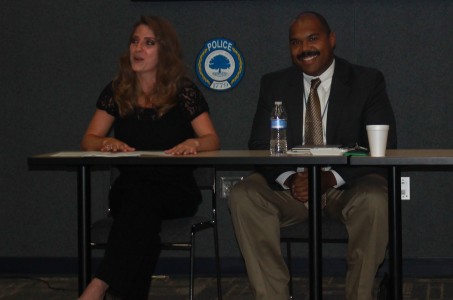Widgetized Section
Go to Admin » Appearance » Widgets » and move Gabfire Widget: Social into that MastheadOverlay zone
What Makes the Home Rule Cities Group Effective
The views expressed are those of the author and do not necessarily reflect the views of ASPA as an organization.
By Matthew Howell
July 21, 2015
In last quarter’s column, I explained the formation and organization of the Home Rule Cities over 20k group, an informal quarterly meeting of mayors from the described cities. The group is also noteworthy because of their effectiveness in changing policy at the state level. Here is how they did it.
The City Classification Change
Until this year, Kentucky organized cities into six classifications. The classifications placed restrictions on the form of government, the cities powers (especially regarding zoning) and the types of taxes that cities could impose. Officially, cities were moved from one classification to another by vote of the General Assembly, but in practice population determined classifications. The gap between the law and practice opened up opportunities for smaller cities. When a city reached the population threshold to switch categories, they simply blocked the vote. A third of cities were miscategorized.
As a result, the mayors of the second-class cities thought the third and fourth-class cities had an exceptionally good deal. Moving above fifth and sixth-class gave cities control over zoning, but they also had or maintained a variety of taxes on restaurants, retail sales and were exempted from some public safety regulations regarding scheduling fire protection and police patrols. While recognizing and understanding the logic of the decision, it galled the other mayors.
On top of the inequalities, there was a patchwork of carve-outs and set-asides. Louisville and Lexington had idiosyncratic governments due to their size and merged governments. Owensboro had a special provision for its alcohol control board. Other cities –often small ones –had similar exceptions.

KLC advisors explaining issues of concern. Photo credit: Matthew L. Howell
In April 2013, KLC sent their legislative liaison to explain the recent pension reforms, and then ask what they should do next. The mayors responded, “Alcohol control, restaurant tax and food and beverage tax.” One mayor, however, disagreed. The mayor argued that the real problem was classification itself. Classification put arbitrary limits on the powers of the cities. What they needed was not a new arbitrary power, but the ability to select the right powers for their particular circumstances. Within an hour, the other mayors had come around to this position and agreed to tell KLC to focus on eliminating city classification.
KLC had been working on this problem for two years at that point. The trick was writing a law that eliminated city classifications but held everyone harmless, especially the smaller cities. While Kentucky is similar to the rest of the country in urban/rural split, according to the mayors, the smaller cities think of themselves as rural. Therefore the legislature leans toward rural interests, hence all of their carve-outs. KLC developed their plan and the mayors began to lobby for the bill. It passed in the 2014 legislative session on the first try and took effect Jan. 1, 2015.
Organizing for Success
According to KLC’s legislative liaison, the largest hurdle for the reform was the existing patchwork of laws. Most cities had special rules they did not want to give up. The Home Rule Cities group greatly simplified the task by having eight of the largest cities in the state agree on a reform. I asked the mayors why they could come to agreement so quickly. They thought it was because the group was small and they could talk freely. Everyone had their say and they trusted each other, so they were persuadable to the new cause. The reforms do not give them everything –no city has gained a new tax. But they now have a framework in which to choose the powers their residents need. It also meant that when they lobbied the legislature, they were all making the same argument. Though they did not say it directly, they also noticed who was supporting the bill and who was not.
There are many more small cities and their general interest in protecting themselves from larger cities tends to keep them advocating the same way. There are, though, divisions between the hundreds of smaller cities. The small number of large cities had many fewer divisions to work around and did so rapidly. Once the smaller cities were assured that no one was trying to take them over—helped in part by having a third-class city mayor lead the effort—opposition to the bill faded and legislators shifted accordingly.
It should be easy to recognize that the mayors formed a very effective interest group, the type Mancur Olson called the “privileged group.” This allowed them to win against the disparate rural cities. The quarterly meetings helped them police everyone’s contribution and they had fewer divergent aims to reconcile. They were not dictators, though. They still needed to address rural concerns. Legislators still react to interest group pressure. The Kentucky mayors show how cooperation can bring about reform.
Author: Matthew L. Howell is an assistant professor of government at Eastern Kentucky University, in Richmond, Kentucky. He holds a doctorate in Public Administration from the Martin School of Public Policy and Administration at the University of Kentucky. He specializes in state and local government, public policy and social networks. He can be reached at EKU by email at [email protected].


Follow Us!